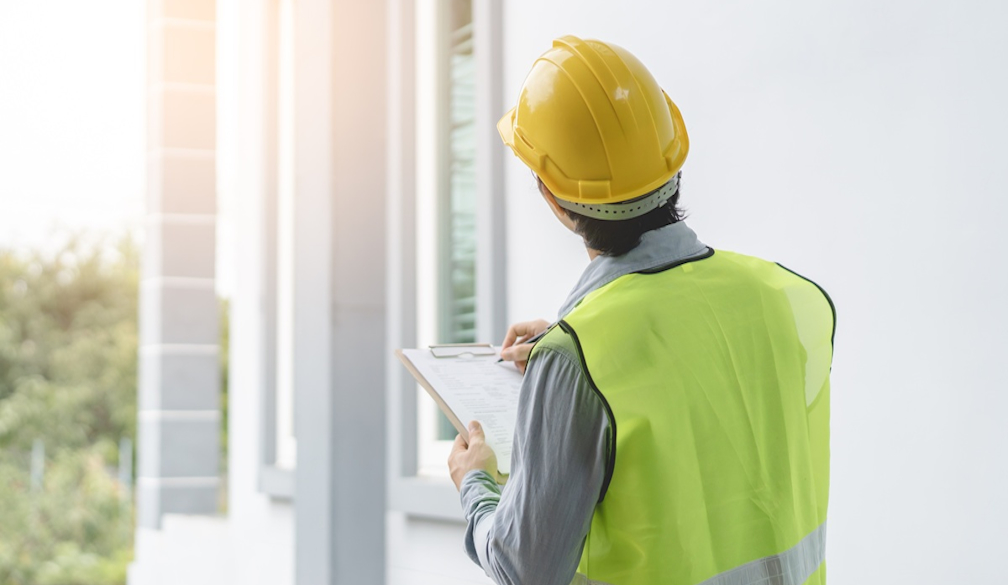Comprehensive Building Inspection Services: What to Expect

A building inspection is a thorough evaluation of a property's condition, carried out by certified professionals. The primary goal is to spot any issues with the structure, systems or safety features.
With over 190,000 new homes expected to be built annually in Australia by 2026, ensuring your home is built to the highest standards is a critical step in protecting your investment. Another motivating reason is the fact that 89% of building inspection reports uncover issues previously unknown to buyers or sellers.
Considering these stats, the most logical course of action would be to get your existing or potential property inspected by the appropriate body.
In this guide, we’ll be breaking down the key stages involved in building inspection services so that you’ll know what to expect when the inspectors come around.
The Key Steps in Building Inspection Services
Here are the stages of a building inspection service:
Pre-Slab or Footing Inspection
Everything begins here, at the foundation of your home. The slab or footing forms the backbone of the entire structure. Any mistakes at this stage can lead to long-term issues like cracking, sinking, or compromised stability. That’s why inspectors give this stage their undivided attention before the concrete is poured.
At this point, the ground itself is under scrutiny. Inspectors ensure that the site is properly prepared, meaning the earth has been compacted, levelled and deemed strong enough to support the structure. They also examine the placement of reinforcements such as the steel bars and mesh, which are critical for strengthening the concrete slab.
Also, the building’s plumbing is reviewed to confirm that all pipes are positioned correctly. You know, discovering down the line that a pipe was misplaced could mean tearing up the entire slab, and of course, this would be an expensive and messy fix. These checks are non-negotiable because a strong foundation sets the tone for everything else that follows.
Frame Stage Inspection
Once the skeleton of your house is up, the next stage begins. The framework consists of walls, roof trusses, beams and other essential structural elements.
While it might look like the hardest part is over, this stage demands careful inspection to ensure the structure is safe and stable. Inspectors focus on whether the framework matches the engineering plans.
They check that all the studs, beams, and roof trusses are installed correctly and securely. Structural integrity is the top priority here because even minor errors could weaken the house over time.
Another critical aspect of building inspection services is wind bracing. Australia’s weather can be unpredictable, and houses need to withstand high winds and storms. Inspectors ensure the framework has been reinforced to handle these conditions.
Another thing they do during this stage is verify that windows and doors are placed correctly to ensure a perfect fit later on. This stage is all about making sure your home’s skeleton is rock solid and ready for the next steps.
Lock-Up or Pre-Plaster Inspection
By this stage, the exterior of the house is mostly complete. Windows, doors, and roofing are in place, and the structure is beginning to resemble a finished home.
However, this is a crucial time to focus on what lies beneath the surface, that is, the things you won’t see once the walls are plastered. Inspectors carefully review the insulation to ensure it’s been installed correctly, without any gaps or loose areas.
Another key focus is on seals. Windows and doors need to be airtight to prevent drafts, water leaks, and energy loss. Any problems at this stage could become costly to fix once the interiors are completed, so inspectors leave no stone unturned. This stage ensures everything behind the walls is flawless before they’re covered up.
Pre-Paint or Waterproofing Inspection
With most of the structural and functional elements in place, it’s time to focus on the finishing touches and waterproofing. Moisture is one of the biggest threats to a home, so this stage is crucial to preventing long-term issues like mould, leaks or water damage.
When conducting building inspections in Geelong, inspectors will examine waterproof membranes, particularly in wet areas like bathrooms, laundries, and kitchens. These membranes need to be installed perfectly to stop water from seeping into walls and floors.
In addition, walls and ceilings must be checked to ensure they’re ready for painting, with no cracks, gaps or uneven areas that could ruin the finished look.
This is also the stage where plumbing and electrical fittings are given one last review before final fixtures are installed. Any overlooked issues here could lead to problems after you move in, so inspectors make sure everything is up to standard.
Final or Handover Inspection
The last stage of building inspection in Geelong is like the grand finale. Your home is nearly complete, and this is your final chance to identify any issues before you take ownership. This stage is all about ensuring your home is both functional and visually flawless.
Inspectors will examine cosmetic finishes, like paint, tiles and flooring, to ensure there are no scratches, cracks, or imperfections. Once everything looks great, they proceed to functionality. Doors, windows, and appliances are tested to confirm they work as intended.
This stage is also when inspectors look for any defects or incomplete work. If there’s anything that doesn’t meet standards, it’s flagged so it can be fixed before you move in.
Wrapping Up
Building inspection services are crucial at every stage of the construction process, from the pre-slab inspection to the final handover check. Each step ensures that your home is built to the highest standards, free from major structural issues, and ready for you to move in with confidence.
So, whether you’re in the market for a new home, building one from scratch, or just want to maintain your current property, you should not, for any reason, underestimate the power of a comprehensive building inspection.
Also Read: The Importance of Routine Gas and Electrical Safety Checks
